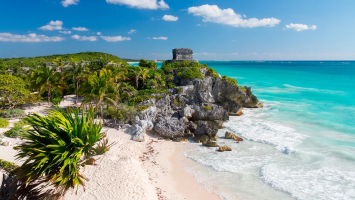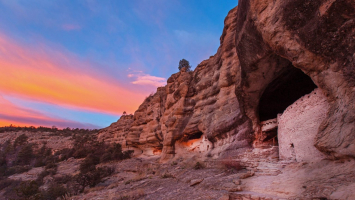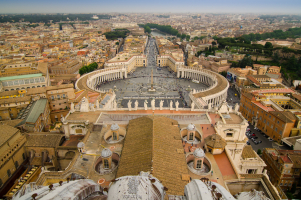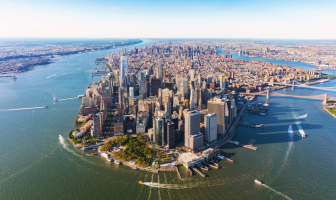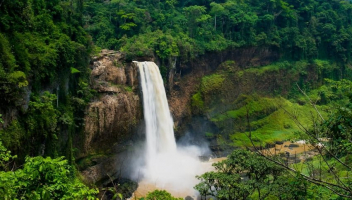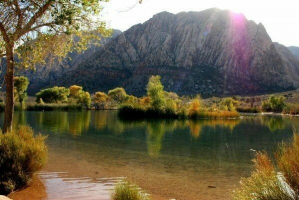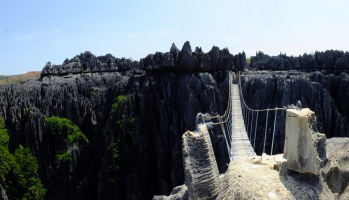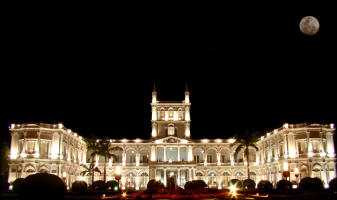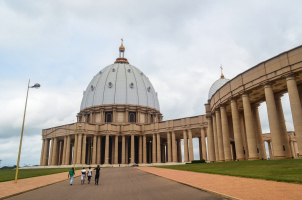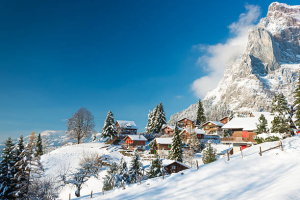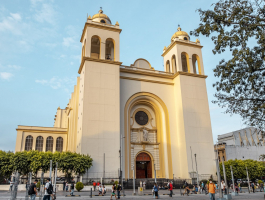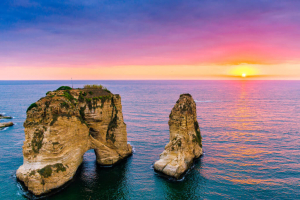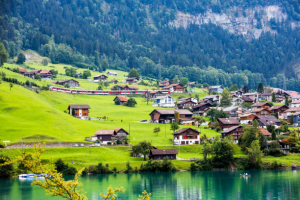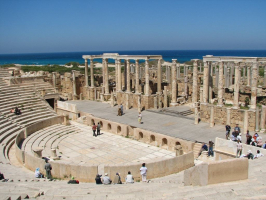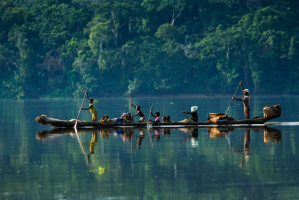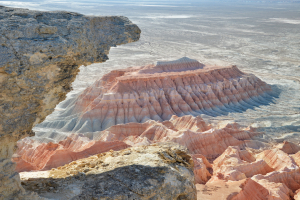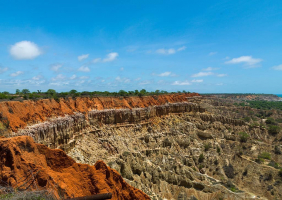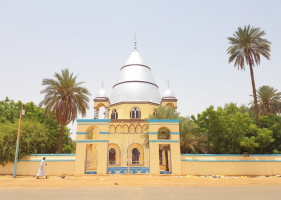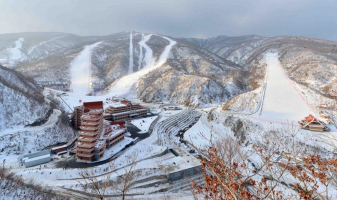Top 10 Best Places to Visit Mexico City
Mexico City, the country's biggest and capital, is one of the world's alpha cities. It is situated on the high Mexican central plateau in the Valley of Mexico. ... read more...Mexico City is the oldest capital city in the Americas and one of only two that were built by indigenous people. Because of its rich history, art, and food, this nation is also known as "The City of Palaces" throughout Latin America. The following are Top 10 Best Places to Visit in Mexico City.
-
The National Museum of Anthropology, Mexico's national museum, is the country's largest and most visited museum. The museum, located in Mexico City's Chapultepec Park between Paseo de la Reforma and Mahatma Gandhi Street, houses the world's biggest collection of ancient Mexican art as well as ethnographic exhibitions of Mexico's contemporary indigenous communities.
There are 23 permanent display halls in the museum. The lower floor houses archaeology displays, while the top level houses ethnographic exhibits regarding contemporary indigenous tribes in Mexico. When you enter the museum, the rooms on the right display the cultures that evolved in Central Mexico and are grouped chronologically. Start on the right and work your way around counter-clockwise to get a feel for how the civilisations changed through time, ending in the Mexica display, consisting of massive stone sculptures, of which the most renowned is the Aztec Calendar, widely known as the "Sun Stone.Halls dedicated to different aspects of Mexican culture may be found to the left of the entryway. The Oaxaca and Maya rooms are especially spectacular. Archeological images are recreated in several of the rooms, including murals in the Teotihuacan display and tombs in the Oaxaca and Maya rooms. This allows you to see the parts in the context in which they were discovered. When you want to take a break, the museum is situated around a huge courtyard, which is a good spot to sit. The museum is large and the collection is enormous, so allow enough time to do it right.
Location: Av Paseo de la Reforma y Calzada Gandhi s/n, Chapultepec Polanco, Mexico City, Mexico
Opening hours: 10 AM - 5 PM
Phone number: +52 55 5553 6266
Rating: 5/5, 20027 Tripadvisor reviews
Website: https://mexicocity.cdmx.gob.mx/venues/national-museum-of-anthropology/
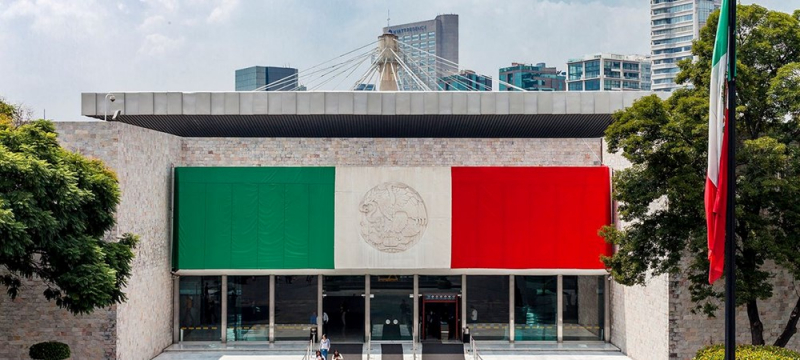
Image by Museums of the world -
Teotihuacan is an ancient Mesoamerican city located in the Valley of Mexico's sub-valley. It is most recognized today as the location of many of the most architecturally noteworthy Mesoamerican pyramids constructed in the pre-Columbian Americas, including the Pyramid of the Sun and Pyramid of the Moon. One of the most enigmatic Mesoamerican mysteries is the Teotihuacan Pyramids. Teotihuacan Mexico, often known as The City of Gods, was named a UNESCO World Heritage site in 1987.
The Teotihuacan pyramids in the complex contain many elements, but the four principal architectural highlights of Teotihuacan are the Pyramid of the Sun, Pyramid of the Moon, Citadel (Ciudadela), and Temple of Feathered Serpent (Quetzalcoatl). The Pyramid of the Moon, located near the complex's northern extremity, is the second-largest pyramid in Teotihuacan. The largest and most popular structure is the Pyramid of the Sun. Many archaeologists, historians, and experts think a god was formerly honored on top of the Pyramid of the Sun. Ciudadela is a submerged plaza with 15-hectare courtyards that can accommodate the whole population of the city.
Getting to the top of the pyramids is a unique experience since you can see the entire complex with spectacular vistas. You may combine your air balloon flight with a tour of the facility by bicycle. After the hot air balloon flight, you may have brunch at a neighboring Mexican restaurant. Because you must be picked up early for this, you may take an hour of relaxation at breakfast. After breakfast, you will begin your bike trip and see the Teotihuacan pyramids. How fantastic your experience will be when you first try to visit one of Mexico City's UNESCO World Heritage Sites.
Location: 55800 San Juan Teotihuacán, State of Mexico, Mexico
Opening hours: 9 AM - 5 PM
Phone number: +52 594 958 2081
Rating: 4.8/5, 20315 Tripadvisor reviews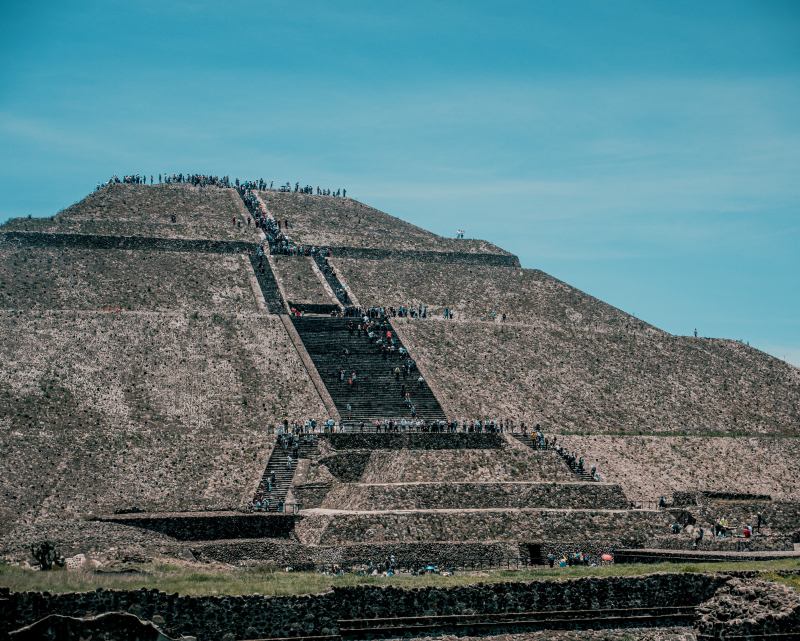
Image by Ruben Hanssen via unsplash.com 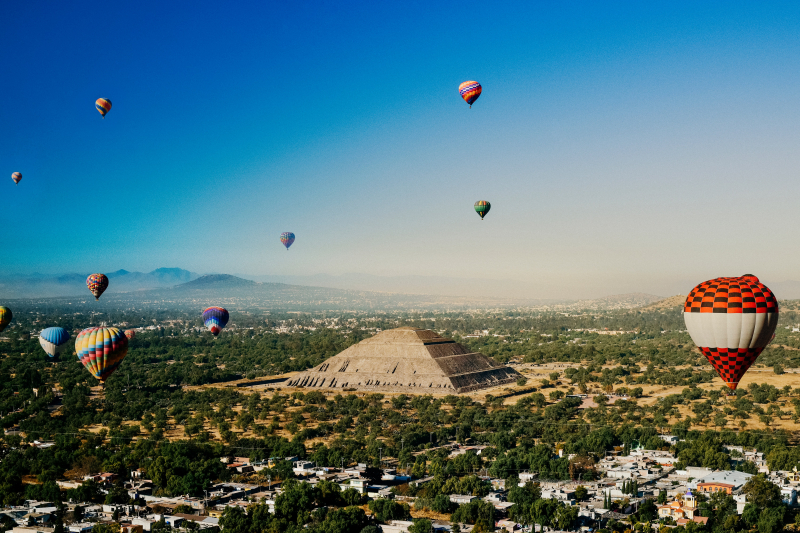
Image by Juliana Barquero via unsplash.com -
The Palace of Fine Arts, commonly known as the Palacio de Bellas Artes, is Mexico City's most opulent and important performance venue. It is one of numerous public structures erected under the administration of Porfirio Daz, who served from 1876 to 1911. The structure has exhibition spaces for sculpture and painting, as well as murals painted by some of Mexico's best painters. It also houses the National Theater and the National Museum of Architecture.
The Palacio de Bellas Arts is mostly Art Nouveau on the façade and Art Deco on the inside, with a stunning mix of architectural styles. The main entryway has sculptures by Leonardo Bistolfi, an Italian artist. Music and inspiration are represented by many cherubs and similar sculptures. The crystal dome that covers the middle of the structure shows the muses with Apollo.
The crystal curtain, a folding screen comprised of approximately a million pieces of iridescent colored glass produced by Tiffany's in New York, is still the most notable aspect of the stage at the theater entrance. It is still unique in the world and weighs around 24 tons. Most foreign tourists will come for the Ballet Folklórico because it is emotionally accessible, and one-of-a-kind in the globe. For almost 60 years, the group has performed traditional and regional dance from around the nation. The Palace of Fine Arts is one of the most prominent and majestic buildings in Mexico City's historic core that you should attempt to see at least once in your life.
Location: Av. Juárez S/N, Cuauhtémoc, 06050 Ciudad de México, CDMX, Mexico
Opening hours: 11 AM - 5 PM
Phone number: +52 528 647 6500
Rating: 4.5/5, 10931 Tripadvisor reviewsWebsite: https://mexicocity.cdmx.gob.mx/venues/bellas-artes/
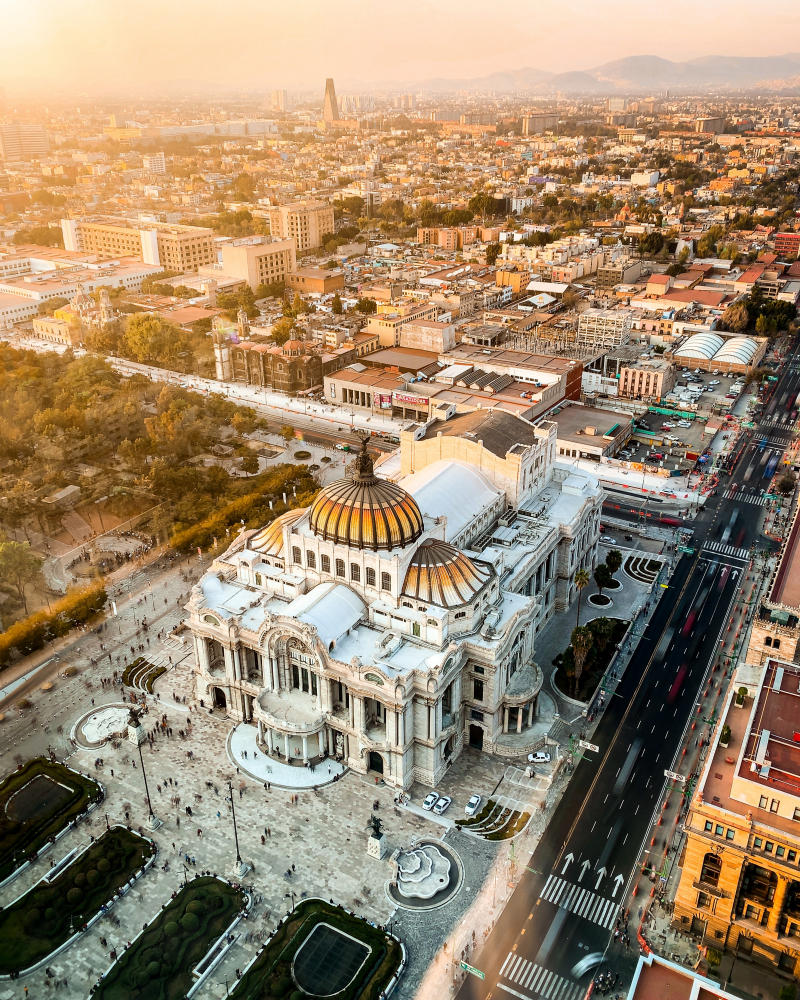
Image by Bhargava Marripati via pexels.com 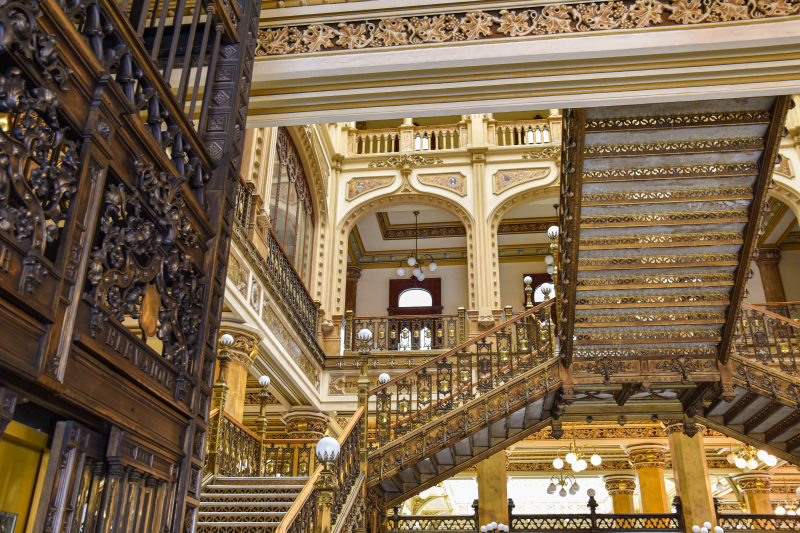
Image by Oscar Dominguez via pexels.com -
Chapultepec Castle is atop Chapultepec Hill in Mexico City's Chapultepec Park. Over the years, Meixco City's Chapultepec fortress has been involved in takeover plans, allegations of foul play, and executions. Chapultepec means "grasshopper hill" in Spanish. The only royal residences occupied by monarchs in North America are Chapultepec Castle and Iturbide Palace. It was erected during the Viceroyalty of New Spain as a summer residence for the viceroy, the senior colonial official.
It is still the only castle in North America that has functioned as a royal home. It was also renovated in a Neoclassical style, which allegedly made the palace more livable. Because of the presence of monarchy on what was then the outskirts of Mexico City, the city created a neighboring street, which is now known as the lively Paseo de la Reforma. Chapultepec Castle was formerly a royal residence, an observatory, a military academy, and even an official guest home for visiting guests.
The Castle was famously utilized during the production of Baz Luhrmann's massively successful Romeo and Juliet. While the Castle is rumored to be haunted — stories include hearing ghostly footsteps going down the hallways and seeing translucent figures in the darkness – these sightings might be a result of Luhrmann's Hamlet adaption.
Location: Bosque de Chapultepec I Secc, Miguel Hidalgo, 11100 Mexico City, Mexico
Opening hours: 9 AM - 5 PM
Phone number: +52 55 7601 9811
Rating: 4.5/5, 10786 Tripadvisor reviews
Website: https://mnh.inah.gob.mx/home-en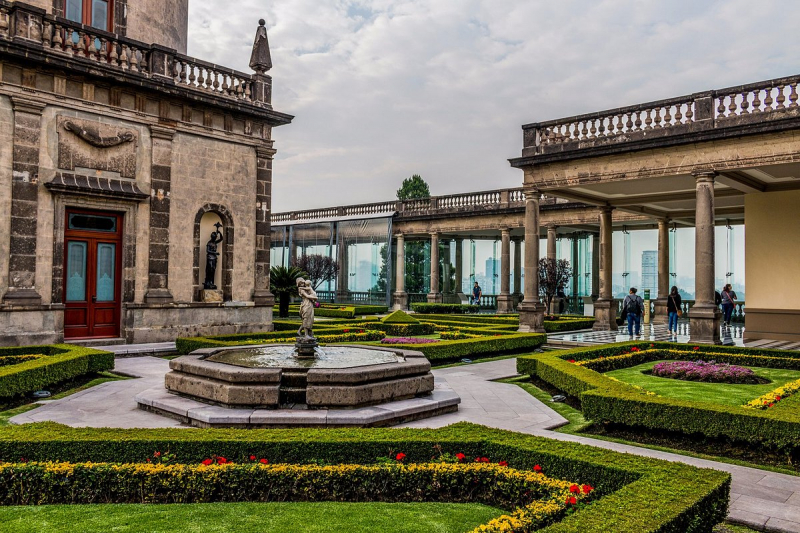
Image by Tripadvisor.com 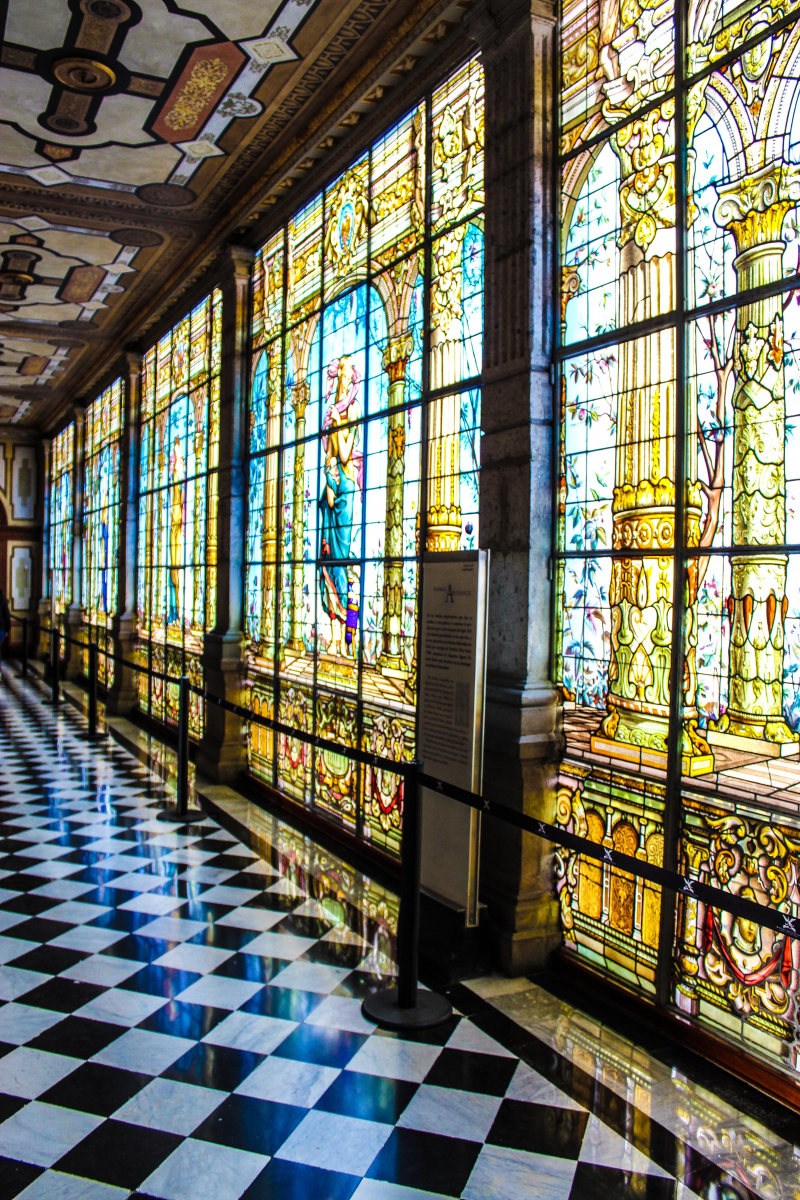
Image by Arpa Sarian via unsplash.com -
Centro Historico is Mexico City's historic center as well as its throbbing heart. It's colorful, bustling, and frequently crowded, much like Zócalo, the name of its main square or Plaza de la Constitución. The magnificent square was built about the 14th century AD and previously functioned as a ceremonial center for the Aztec metropolis of Tenochtitlan. The historic site make you witness Mexico's birth and began to take shape during the post-colonization era, owing to the architectural efforts of Alonso Garca Bravo, a Spanish mercenary who participated in the Conquest of Mexico. Zócalo Square is the largest plaza in Latin America.
Centro has a unique vibe because to its taquerias, murals, secret corners, and interesting architecture. This enormous area is bordered by a massive flagpole flying the Mexican flag. Prior to the Spanish conquest, El Zócalo was the Aztecs' primary ceremonial place. It is now one of the most important venues for politics, cultural events, and music. Because to the absence of shade, the plaza can seem like a hell's kitchen at times, so go during the cooler part of the day for the best experience. You may also stroll up to the terrace of the Hotel Gran Ciudad de México for beautiful photographs, or enjoy lunch at Balcón del Zócalo, a rooftop restaurant at the Zócalo Central Hotel that offer an amazing site of the plaza.
Location: Centro Histórico de la Cdad. de México, Centro, Cuauhtémoc, 06010 Ciudad de México, CDMX, Mexico
Opening hours: 3 PM - 12 AM
Phone number: N/A
Rating: 4.5/5, 5591 Tripadvisor reviews
Website: https://www.zocalopublicsquare.org/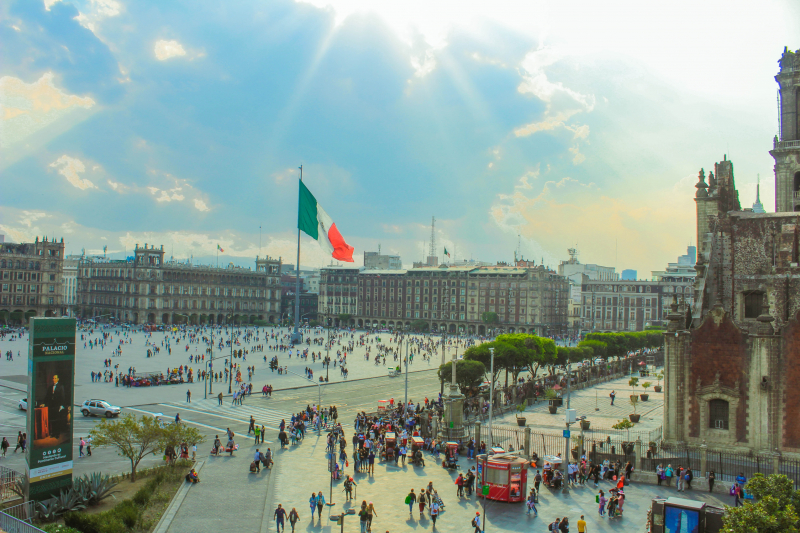
Image by Andres Villalon via unsplash.com 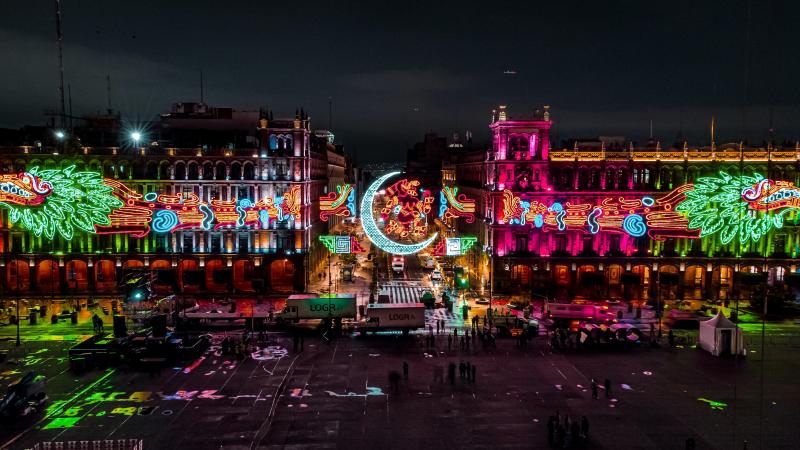
Image by Jorge Medina via pexels.com -
Coyoacán is a peaceful neighborhood in Mexico City. Previously, it was a rural village. The name derives from Nahuatl and most likely means "place of coyotes". Throughout the colonial period and into the nineteenth century, the town and subsequent municipality of Coyoacán remained totally autonomous of Mexico City. Coyoacán has developed into a thriving center of art and history in Mexico City. To learn about the local history, you should visit the various museums, cafés, bookshops, and marketplaces in this quintessentially Mexican area.
The Fountain of the Coyotes, one of the city's most prominent fountains, is at the entrance to the Coyoacán park, Vivero Coyoacán. The park is popular with joggers, martial artists, and families since the open area provides good places to socialize or practice a sport. Vivero Coyoacán has a broad range of vegetation, including tropical plants and several varieties of cactus.Frida Kahlo, a Mexican painter known for her works inspired by the nature and artifacts of Mexico, spent the most of her life in Coyoacán, where she resided in the same house until her death in 1954. This mansion, known as La Casa Azul (The Blue House), was donated by Kahlo's husband with the goal of establishing the Museum of Frida Kahlo in her honor. There are paintings by Kahlo and Rivera on display, as well as pictures, artifacts, and personal belongings, all of which give insight into the life of this famed Mexican artist.
The Los Coyotes Zoo is a fascinating attraction in Coyoacán City. The Los Coyotes Zoo exclusively holds local animals or fauna from the Basin of Mexico, which includes 2% of the country's biodiversity. It also houses two coyotes, for whom the zoo is called. Furthermore, Los Coyotes Zoo provides opportunities to participate in a variety of activities such as sports, camping, and sculpting.
Location: Av. Coyoacán 2000, Col. Xoco, 03330, Mexico City, Mexico
Rating: 4.5/5, 7884 Tripadvisor reviews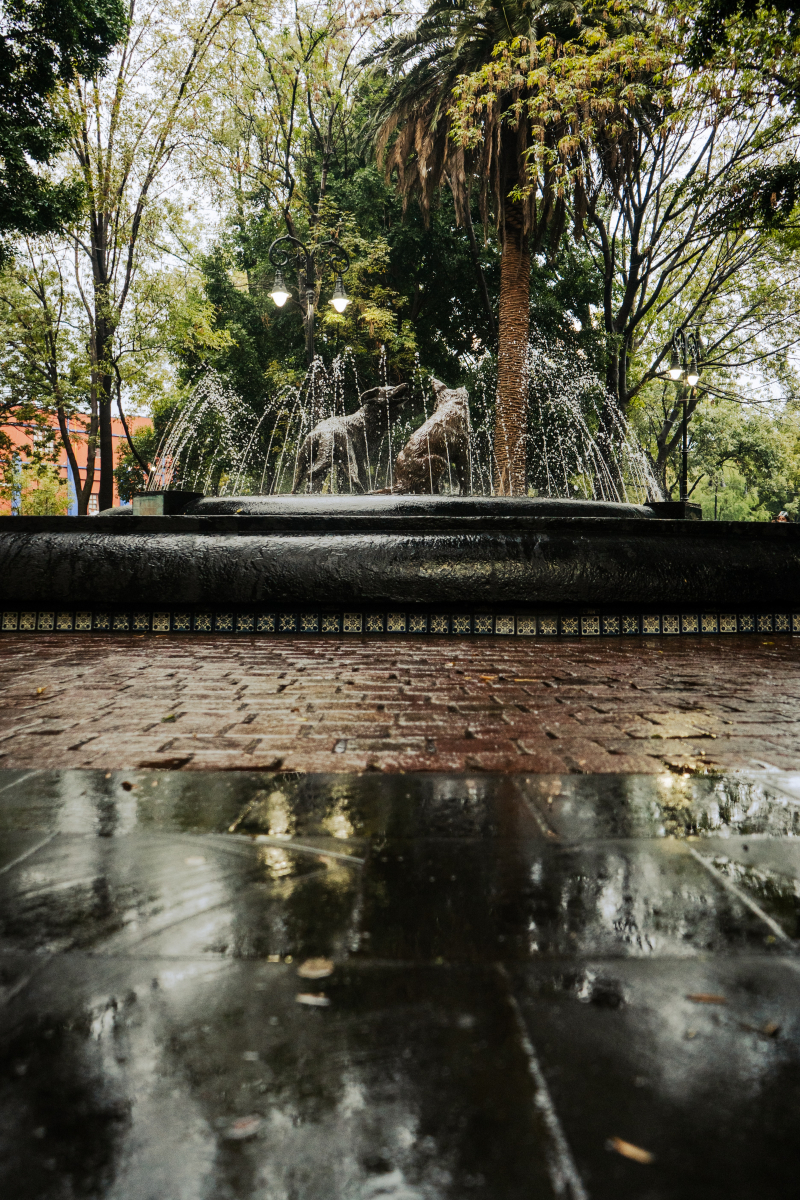
Image by Daniel Alvasd via unsplash.com 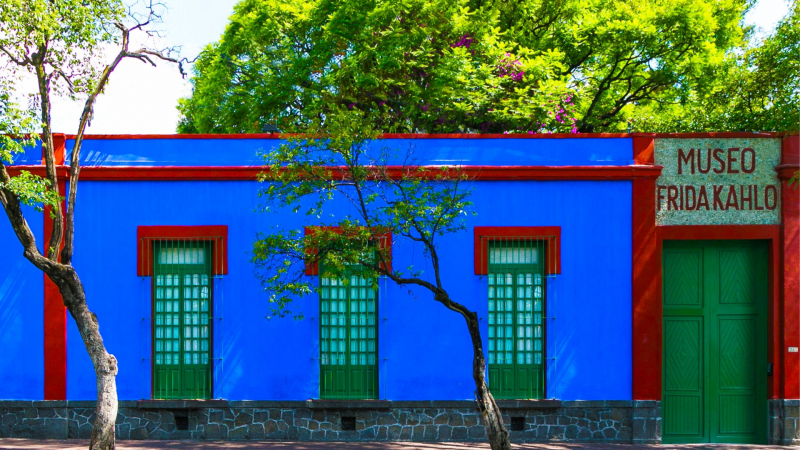
Image via Museo Frida Kahlo -
The Templo Mayor was one of the most important temples in Tenochtitlan, the Aztec empire's ancient capital. The edifice was dedicated to two Aztec deities, Huitzilopochtli, the deity of battle, and Tlaloc, the god of rain and agriculture, sometime after 1325 CE. The temple is supposed to be built on the precise site where the Aztecs saw their symbolic eagle perched on a cactus in its beak - Mexico's current emblem.
The temple, like other religious structures, was rebuilt multiple times, with each restoration followed by the sacrifice of captive warriors. The entrance to the temple site and museum is east of the cathedral, across the busy Plaza del Templo Mayor, where most of the exterior of the Templo may be seen without entering. Authorized tour guides are available at the entry.
A model of Tenochtitlan is included in the site's entry charge. The huge wheel-like stone of Coyolxauhqui, best viewed from the top level, takes center stage. She is depicted beheaded, the consequence of her death by Huitzilopochtli (her brother, the god of battle, the sun, and human sacrifice), who also murdered his 400 brothers on his way to becoming top deity.
A newer entrance hall open to the public displays objects discovered over four years of the hall's excavation about funerary objects, bones. Colonial-era fine china and pre-Hispanic structures of Cuauhxicalco, keeping Templo Mayor continually intriguing even for return visitors. The Templo Mayor Museum is part of the UNESCO World Heritage Site.
Location: Seminario 8, Cuauhtémoc, 06060 Ciudad de México, CDMX, Mexico
Opening hours: 9 AM - 5 PM
Phone number: +52 55 4040 5600
Rating: 4.5/5, 4380 Tripadvisor reviews
Website: https://templomayor.inah.gob.mx/english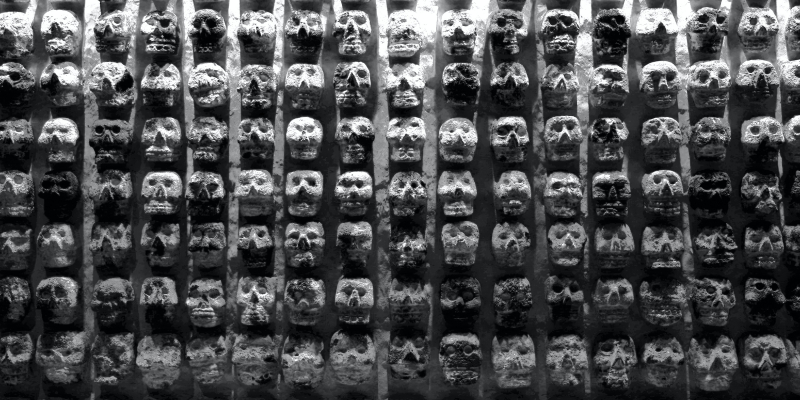
Image by Jens Aber via unsplash.com artsandculture.google.com -
The Metropolitan Cathedral is one of Mexico's most prized architectural marvels, as well as one of Latin America's largest and oldest churches. The Metropolitan Cathedral of Mexico City is situated on supernatural terrain. It was the meeting point of the four cardinal points as well as the delineation of the four original neighborhoods of ancient Tenochtitlan. As a result, it serves as the spiritual hub of the Aztec capital.
This cathedral features a monumental structure that is notable for its architectural and decorative styles, which include Renaissance, Baroque, and Neoclassic. The overall effect is expansive but harmonized. Many notable painters painted and sculpted masterpieces within the cathedral, including The Assumption of the Virgin, the Woman of the Apocalypse, and the Altar of Kings. The cathedral's floor layout is shaped like a Latin cross. The church is oriented north-south, with the main facade on the south side of the structure, which features three entrances and a gated atrium. The main front features a relief depicting the Assumption of the Virgin Mary, for whom the cathedral is named.
The Metropolitan Cathedral is unquestionably one of the most significant structures in Mexico City's historical core. Aside from its religious importance, it provides an overview of five centuries of Mexican art and architecture. Its imposing grandeur, intriguing history, and stunning art and architecture make it one of Mexico City's most spectacular structures.
Location: P.za de la Constitución S/, Cuauhtémoc, 06000 Ciudad de México, CDMX, Mexico
Opening hours: 9 AM - 5:30 PM
Phone number: +52 55 4165 4052
Rating: 4.5/5, 4923 Tripadvisor reviewsWebsite: https://mexicocity.cdmx.gob.mx/venues/metropolitan-cathedral/
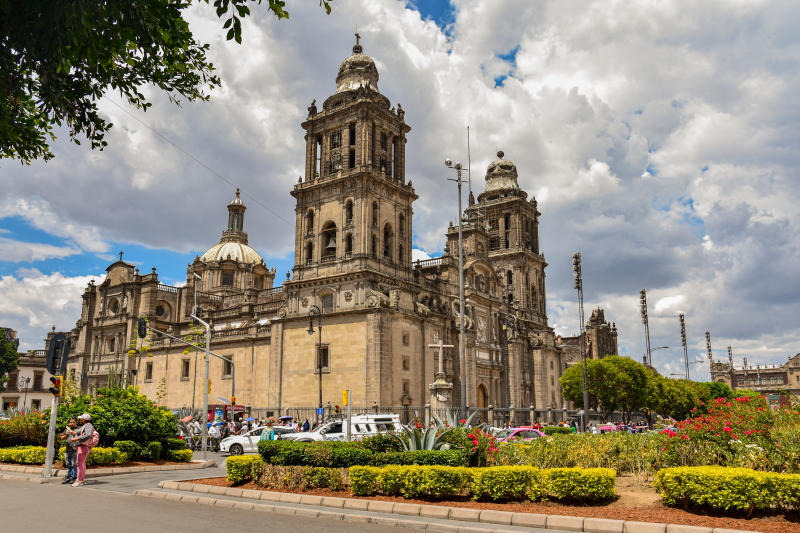
Image by Oscar Dominguez via pexels.com 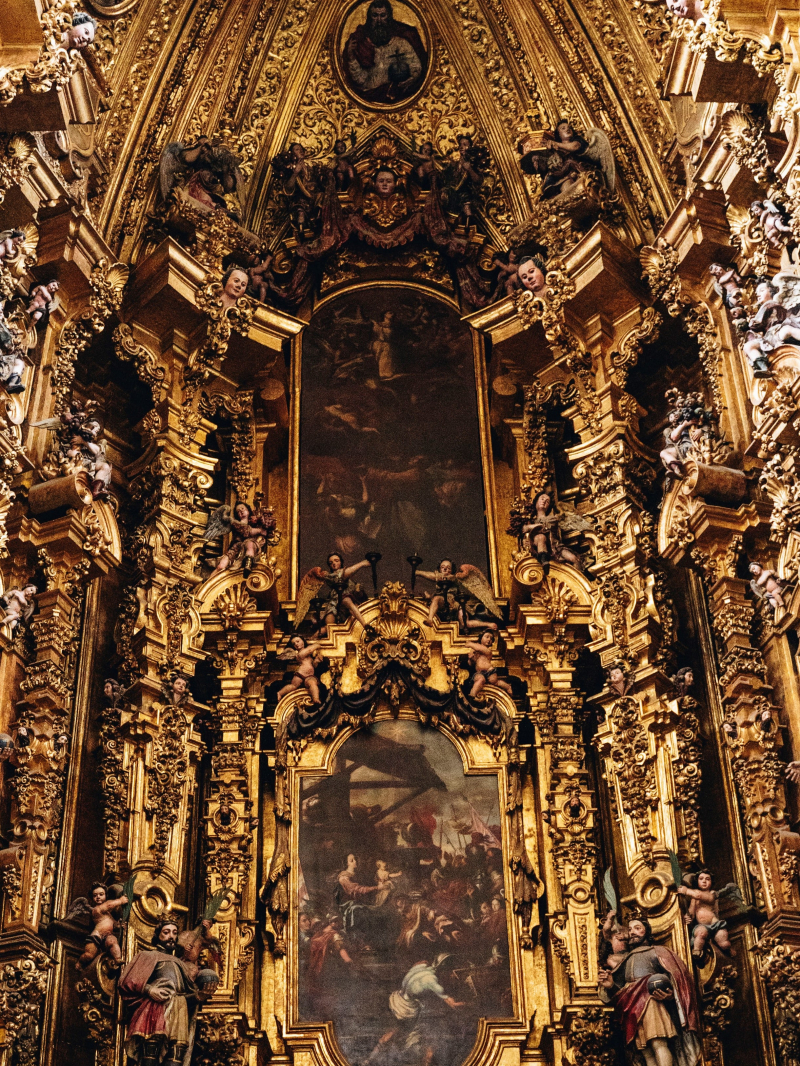
Image by Diego Lozano via unsplash.com -
The Museo Soumaya is a private museum and a non-profit cultural organization in Mexico City, featuring two museum buildings. The museum was named after Soumaya Domit, the museum's founder's wife, Carlos Slim. The museum received its five millionth visitor in 2015, making it one of Mexico's most visited museums. The museum houses the biggest collection of pre-Hispanic and colonial-era coins in the world.
Museo Soumaya, designed by son-in-law of museum's founder, is wrapped in a skin of mirrored hexagons and has a flowing form and interiors. The structure of the building is made up of 28 curving steel columns with varied lengths that run around the circumference and are connected to a concrete platform. The hexagonal pieces modify the look of the structure depending on the weather and time of day, referencing the typical colonial, ceramic-tiled façade of Mexico City.
Over 66,000 works of art are housed in the Museo Soumaya. The majority of the artwork dates from the 15th through the 20th century in Europe. It also has Mexican art, religious relics, historical records, and coins from Mexico. Pablo Picasso, Leonardo da Vinci, Vincent van Gogh, and other renowned European painters whose work is on exhibit. The most precious piece of art in the collection is said to be a rendition of Madonna of the Yarnwinder by a member of Leonardo da Vinci's group.
Location: Blvd. Miguel de Cervantes Saavedra, Granada, Miguel Hidalgo, 11529 Ciudad de México, CDMX, Mexico
Opening hours: 10:30 AM - 6:30 PM
Phone number: +52 55 1103 9800
Rating: 4.5/5, 3986 Tripadvisor reviews
Website: N/A
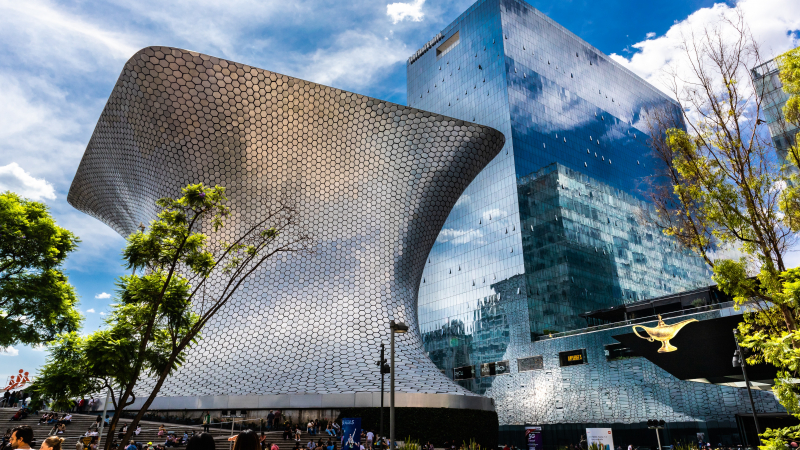
Image by Oscar Arellano via unsplash.com 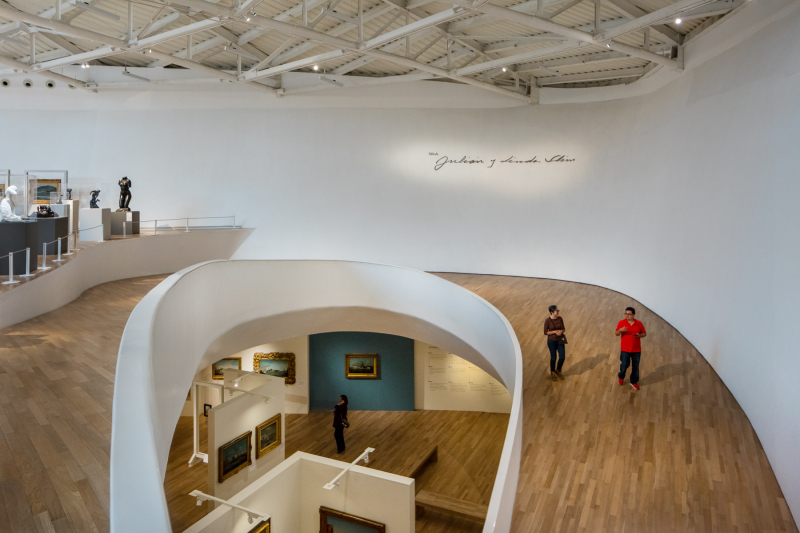
Image via Colorado's design magazine -
When discussing what is the emblem of Mexico City, the Angle of Independence is one of the most iconic monuments that must be noted. Most generally known as El ngel, it is formally known as Monumento a la Independencia. The Angel was ultimately completed in 1910, just in time to honor Mexico's 100th year of independence from Spain. The Angel, like Reforma Avenue and the rest of Mexico City's major sculptures, was an attempt by President Porfirio Diaz to bring all the majesty, class, and sophistication of the great European capitals to Mexico City.
The Angel is a winged statue of the ancient Roman goddess of triumph, Victoria. In one hand, she carries a laurel wreath to lay on the heads of successful freedom fighters, and in the other, a broken three-link chain representing three centuries of Spanish tyranny in Mexico until Mexicans rose up and broke away from Spain. The base of the column is quadrangular, with a bronze sculpture representing law, war, justice, and peace at each vertex.
On a normal day, visits to the Angel include only a walk around the base of the statue and its mini-museum honoring the independence fighters, but with advance notice and a special permit, groups can ascend the statue's winding inner staircase and go all the way to the top of the Angel for a breathtaking view of Mexico City below.Location: Av. Paseo de la Reforma, Juárez, Cuauhtémoc, 06500 Ciudad de México, CDMX, Mexico
Opening hours: Always open
Phone number: N/A
Rating: 4.5/5, 460 Tripadvisor reviews
Website: https://mexicocity.cdmx.gob.mx/venues/el-angel-independencia/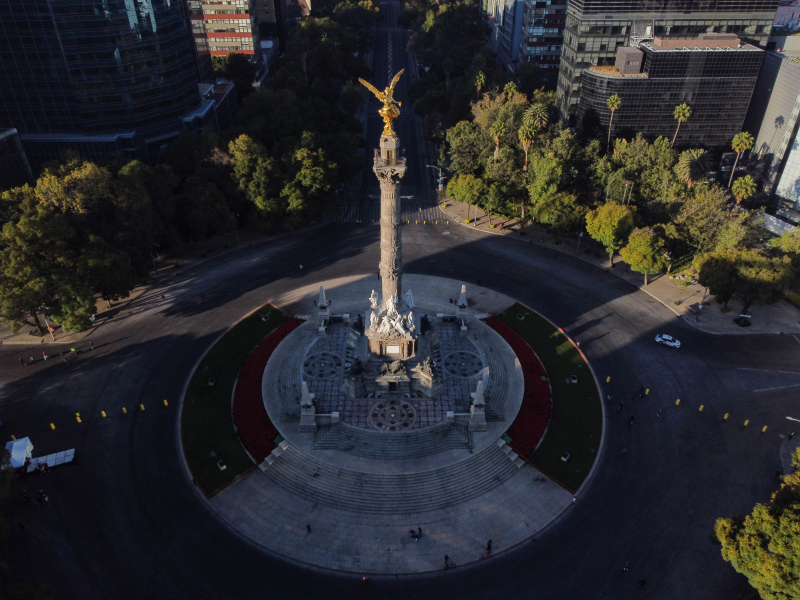
Image by Antonio Ochoa via pexels.com 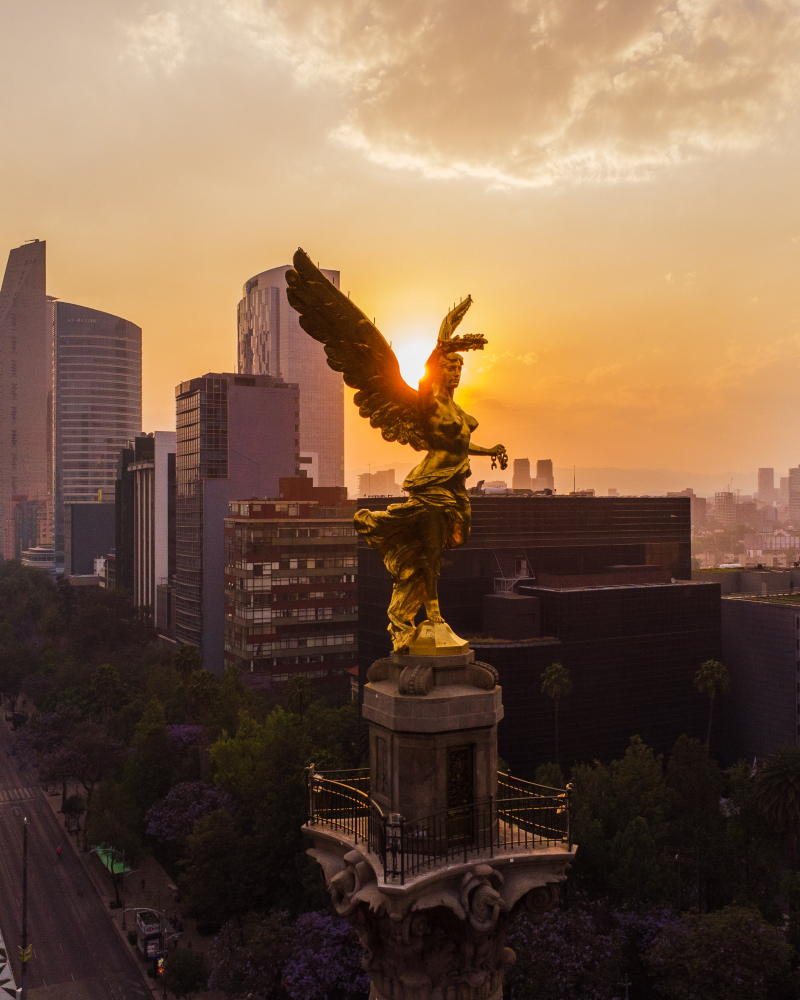
Image by Fernando Paleta via pexels.com












